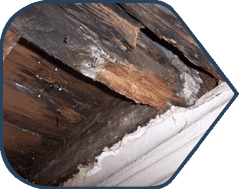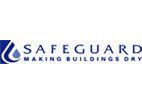Wet Rot Treatment
The Effects of Wet Rot Fungus
The term 'Wet Rot' is often used to describe most fungi other than dry rot and is confined to wet timbers only. Wet rot fungus has no facility to colonise any surrounding dry timbers or other building materials. Timbers affected by wet rot are normally joist ends and wall plates in contact with damp masonry. The most common forms of wet rot are: - cellar fungus (Coniophora Puteana), white pore (Fibropornia vaillantii) and white rot (Donkioporia expansa).
Steps to Eradicate Wet Rot
Treatment of timbers affected by wet rot decay is often limited to the replacement of badly decayed timbers in conjunction with the localised application of preservative fluids or pastes.
All remedial works would be considered after a full inspection of the affected area. Treatments we provide include:
- Eliminating the source of moisture.
- Removing the affected timber back to sound timber.
- Replacing previously removed timber with industrially (pressure) treated timber.
- Ensuring timbers are isolated from supporting masonry.
- Treating any surrounding timber that may be at risk.
- Ensuring that adequate sub floor ventilation is provided.
If you require an inspection of the affected areas then please call us on 01227 860 550 or fill in our contact form on this site.
Book now
Thank you for contacting us.
We will get back to you as soon as possible
We will get back to you as soon as possible
Oops, there was an error sending your query.
Please try again later
Anglian Tectonics
The Old Store Church Lane, Chislet, Canterbury,
CT3 4EB
© 2024. The content on this website is owned by us and our licensors. Do not copy any content (including images) without our consent.












